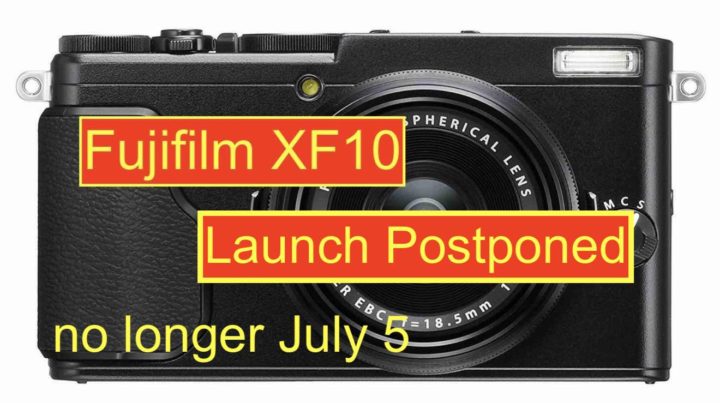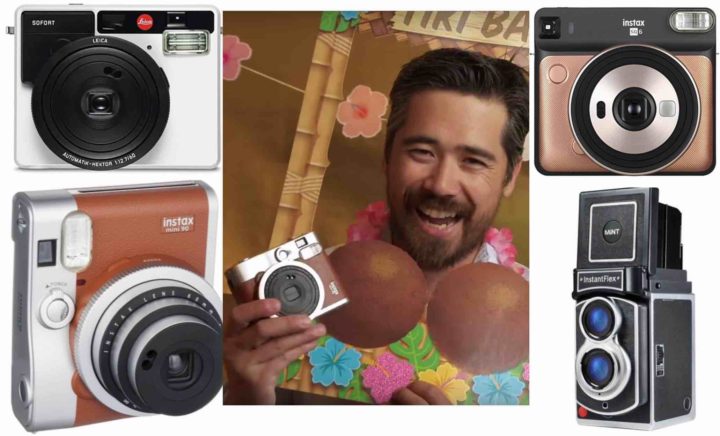HOT DEAL: Save $400 on Fujifilm X-T2 with XF 18-55
Fujifilm X-T2
AmazonUS is selling the Fujiflm X-T2 with kit lens with a huge $400 price drop.
You won’t find (for now) the same price at other stores like BHphoto, Adorama and Focuscamera.
AmazonUS is selling the Fujiflm X-T2 with kit lens with a huge $400 price drop.
You won’t find (for now) the same price at other stores like BHphoto, Adorama and Focuscamera.

Back in June we reported that Fujifilm registered a camera with the code name “FF 180002” to be announced on July 5, said the same document.
However, as spotted by nokishita, Fujifilm now removed the reference to the July 5th announcement from the document. Nokishita writes “it is unclear whether it is a mistake or postponement“.
So don’t expect anything coming on July 5th. You can celebrate Independence Day and take care about the hang-over the day after… there won’t be any live blogging you have to follow :) .
The Fujifilm XF10 is an X70 without one of the most loved features of the X70, the selfie screen, and it has a Bayer sensor.
The Fujifilm XF10 can not be considered and won’t be even marketed as the X70 successor. We already wrote our X80 wish-list with list of features and improvements we would like to see over the X70.
Currently there are a total of 3 Fujifilm cameras registered:
Don’t forget to follow FujiRumors on Facebook, RSS-feed, Instagram, Youtube and Twitter

If you weren’t hiding under a rock for the last decade, then you will have noticed that the instant film trend, launched back in 1972 with the iconic Polaroid SX-70 and ended in the nineties, is having an impressive revival thanks to Fujifilm Instax products in recent years.
But how was this revival made possible?
Fujifilm was just about to shut down their entire Instax production just like Polaroid did a few years earlier, when an unexpected event breathed new life into the agonizing market. You can find a more in-depth explanation of the several reasons of the boom here.
Since then, the sales numbers have skyrocketed over anything Fujifilm could have hoped and they passed from 100,000 sold cameras in 2004 to 7,500,000 sales in 2017. In the documentary “How Fujifilm survived the digital age”, a Fujifilm Instax employee says they simply can’t keep production up with the high demand.
The market is under firm control of Fujifilm and even more so the instax film market, which, as Polaroid says, is 99% controlled by Fujifilm, and we can now find endless versions of it, such as the Star Wars Instax Film, Comic Instax Film, Hello Kitty film, Candy Pop, Rainbow and so on and so forth.
Now, the instax-revival has motivated other companies to try to get a piece of the cake, too.
Polaroid (now owned by The Impossible Project) is fighting hard to try to regain their old glory, not only by offering their own Polaroid Instant Cameras and Polaroid Instant Printers, but also by bringing Fujifilm to court and accusing them that Fuji’s latest Instax Square Film design is a rip-off of Polaroids’ own film.
Of course as customers we can only be happy that more choices are available on the market now.
Now DPReview TV compared some of the Instant cameras on the market, which all take Fujifilm’s Instax Mini film:
Here is what they say:
Fujifilm Europe has already launched big deals on X-T2, X-H1, X-Pro2 and X-E3.
Now US store BestBuy is offering the Fujifilm X-T2 body only with a massive $500 price drop and the kit version with a $400 discount.
Are you afraid you will miss this or similar deals at BHphoto & Co?
Please don’t panic… simply follow FujiRumors on Facebook, RSS-feed and Twitter and I will notify you immeditaly about future deals.
And thanks a lot to the reader, who passed me the link to BestBuy… your help means the world to me :) .
Fujifilm X-H1: BHphoto, AmazonUS, Adorama, Focuscamera
Fujifilm X-T2: BHphoto, AmazonUS, Adorama, Focuscamera
Fujifilm X-E3: BHphoto, Adorama, AmazonUS, FocusCamera
Fujifilm X-Pro2: BHphoto, AmazonUS, Adorama, FocusCamera